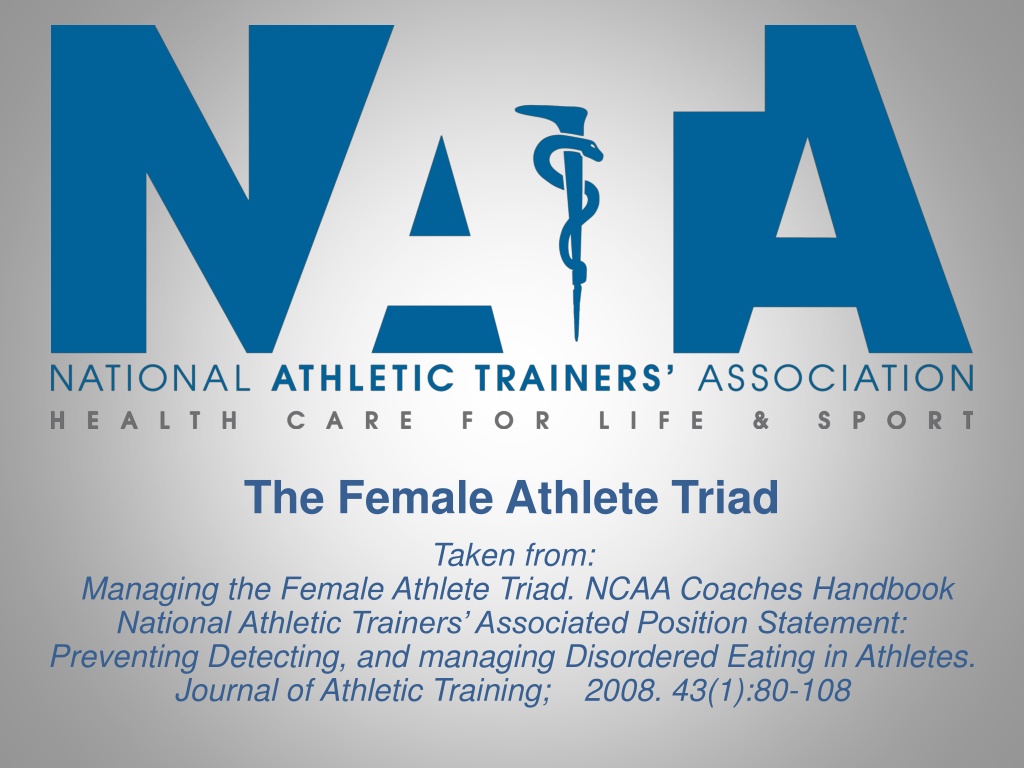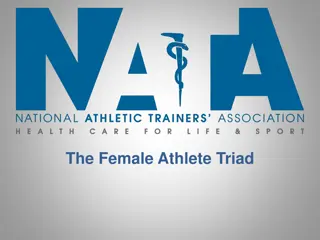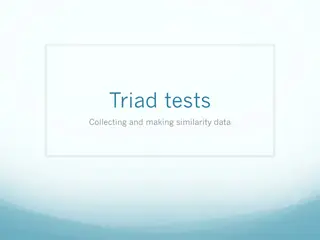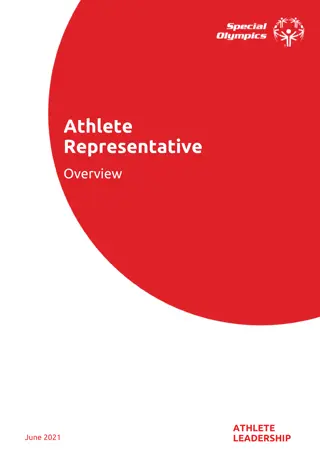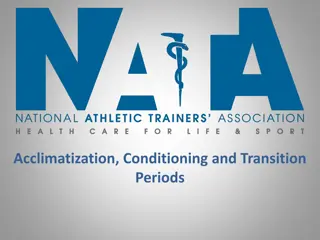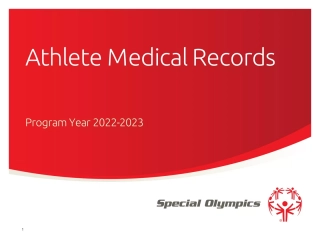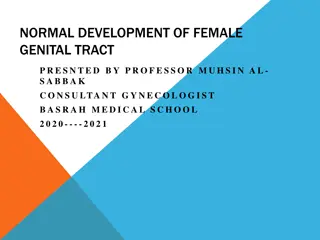Recognizing and Managing the Female Athlete Triad: Coaches' Role
The Female Athlete Triad encompasses disordered eating, amenorrhea, and osteoporosis. Coaches play a vital role in recognizing and addressing disordered eating in athletes. This condition ranges from simple dieting to clinical eating disorders, impacting performance and health. Understanding the signs and symptoms of disordered eating, both physical and psychological, is crucial for early detection and intervention to prevent long-term consequences like amenorrhea and osteoporosis that affect female athletes.
Uploaded on Sep 14, 2024 | 0 Views
Download Presentation

Please find below an Image/Link to download the presentation.
The content on the website is provided AS IS for your information and personal use only. It may not be sold, licensed, or shared on other websites without obtaining consent from the author. Download presentation by click this link. If you encounter any issues during the download, it is possible that the publisher has removed the file from their server.
E N D
Presentation Transcript
The Female Athlete Triad Taken from: Managing the Female Athlete Triad. NCAA Coaches Handbook National Athletic Trainers Associated Position Statement: Preventing Detecting, and managing Disordered Eating in Athletes. Journal of Athletic Training; 2008. 43(1):80-108
Female Athlete Triad Disordered Eating Includes the full spectrum of abnormal eating behaviors, ranging from simple dieting to clinical eating disorders. Amenorrhea The loss of menstruation Primary-the individual has not experienced her first menstrual period by age 15 when secondary sex characteristics have developed Secondary-the postmenarchal athlete misses three consecutive periods. Osteoporosis Disease characterized by low bone mass and deterioration of bones tissue, resulting in bone fragility and increased risk of fracture.
Disordered Eating The term disordered eating is used rather than eating disorders because the athlete's eating does not have to be disordered to the point of a clinical eating disorder in order for the other two components of the athlete triad to occur. Disordered Eating can be inadvertent such as mistakenly eating too little to fuel the body. Willfully restricting caloric intake (dieting, dietary restriction) is the primary precursor to eating disorders.
Coaches Role in Recognizing Disordered Eating Coaches are in a good position to identify disordered eating. Identification can by complicated by sport body stereotypes. Lean body types=increased performance & good performance=good health. Coaches need to be aware of physical/medical and psychological/behavioral signs and symptoms of disordered eating.
Signs and Symptoms of Disordered Eating Psychological/Behavioral Signs and Symptoms Physical/Medical Signs and Symptoms Anxiety and/or Depression Claims of Feeling Fat Despite Being Thin Excessive Exercise Excessive Use of Restroom Unfocused, Difficultly Concentrating Preoccupation with Weight and Eating Avoidance of Eating and Eating Situations Use of Laxatives, Diet Pills, etc. Amenorrhea Dehydration Gastrointestinal Problems Hypothermia Stress Fractures (overuse injuries) Significant Weight Loss Muscle Cramps, Weakness, or Fatigue Dental and Gum Problems
Amenorrhea Amenorrhea is very common among female athletes. Some female athletes even see it as the norm for sports among their peers; this makes it very difficult to catch because of lack of reporting. It does not have to fall on the coach to monitor for this condition, rather, it should fall into the hand of a team physician, nurse, or athletic trainer. What to do? A designated health-care professional should meet with the team prior to each season to inform the student-athletes about the importance of healthy menstrual function. Make it clear how and to whom they should report any irregularities.
Amenorrhea Amenorrhea related to sport participation can often be reversed. Common treatments include: Increased caloric intake Decrease in physical activity Rare cases could require hormone therapy An athlete s response to recommendations regarding eating, training, and medication will vary. Difficulty in compliance usually increases with the severity of the disordered eating.
Osteoporosis Unfortunately, bone problems are typically the first signs reported within the triad. If frequent fractures, especially stress fractures, are present, the student-athlete should also be assessed for menstrual dysfunction and disordered eating. The treatment of osteoporosis and amenorrhea is key because it involves the athlete's current and future reproductive and bone health.
Prevention Strategies 1. De-emphasize weight Emphasis on weight or thinness/leanness will likely increase the risk of disordered eating. De-emphasis will likely have the converse effect. 2. Recognize individual differences in athletes By focusing on the athlete's individual differences, the likelihood of enhanced performance for each athlete can be increased 3. Education Education should be made available to everyone involved Coaches remain instrumental in the detection of the triad, therefore education is key. 4. Involvement by Sport Governing Bodies
